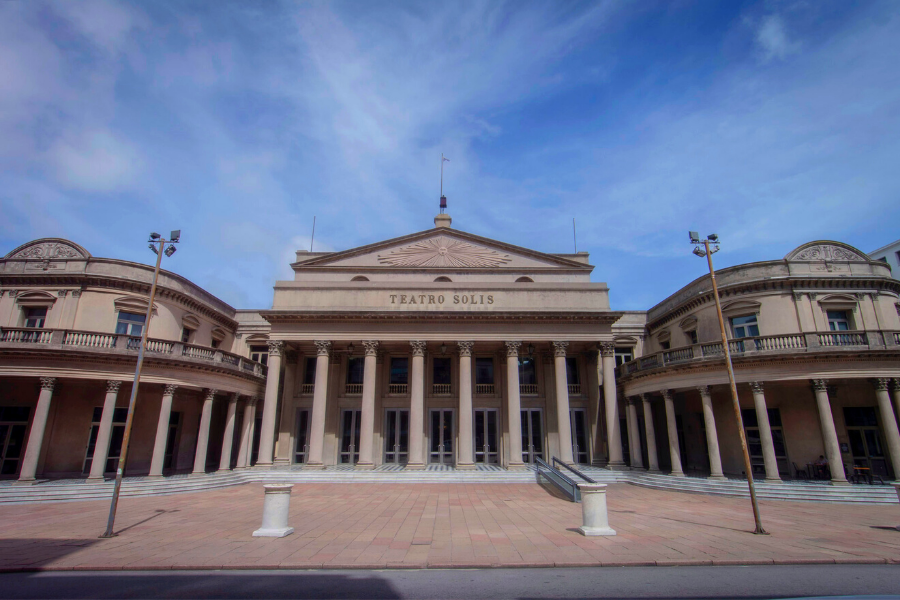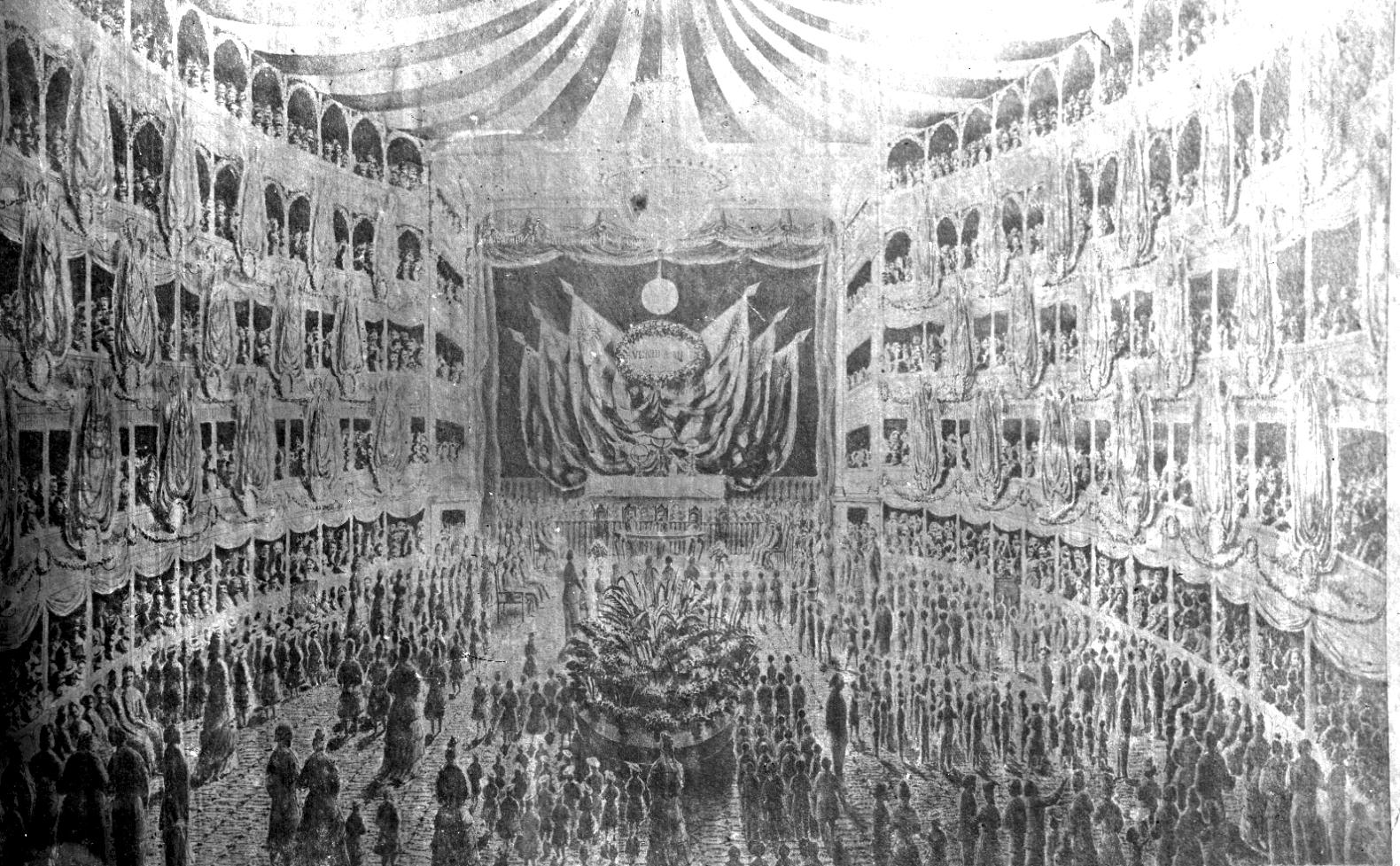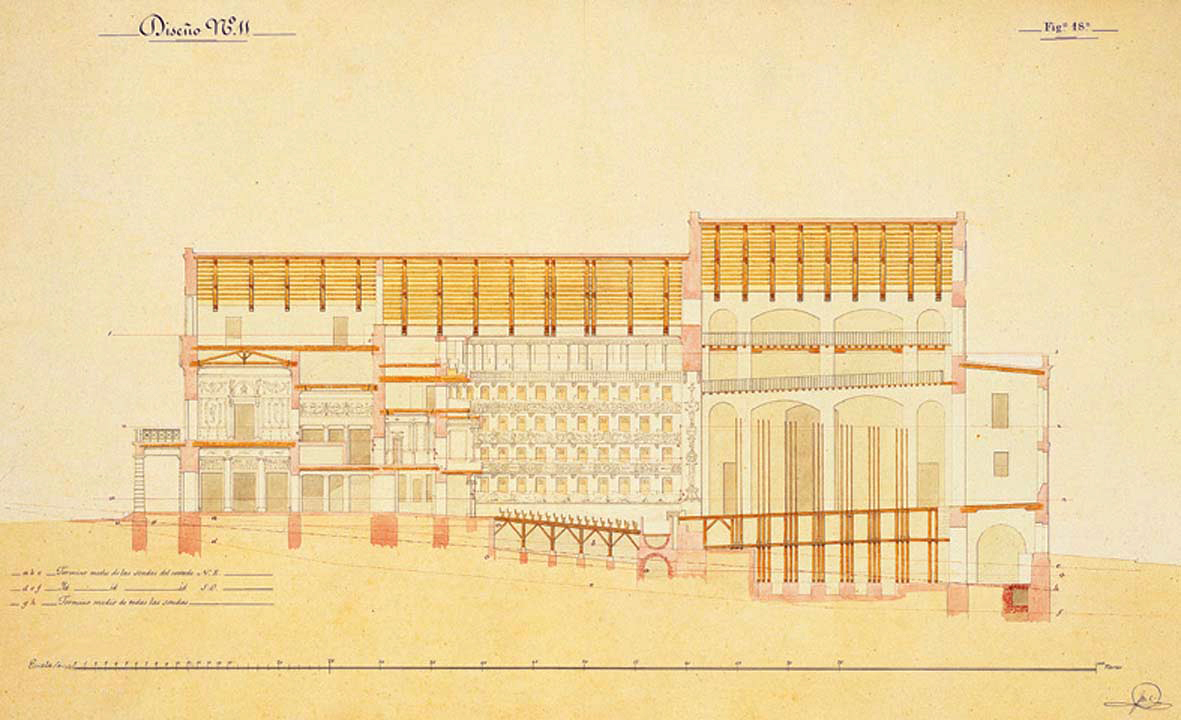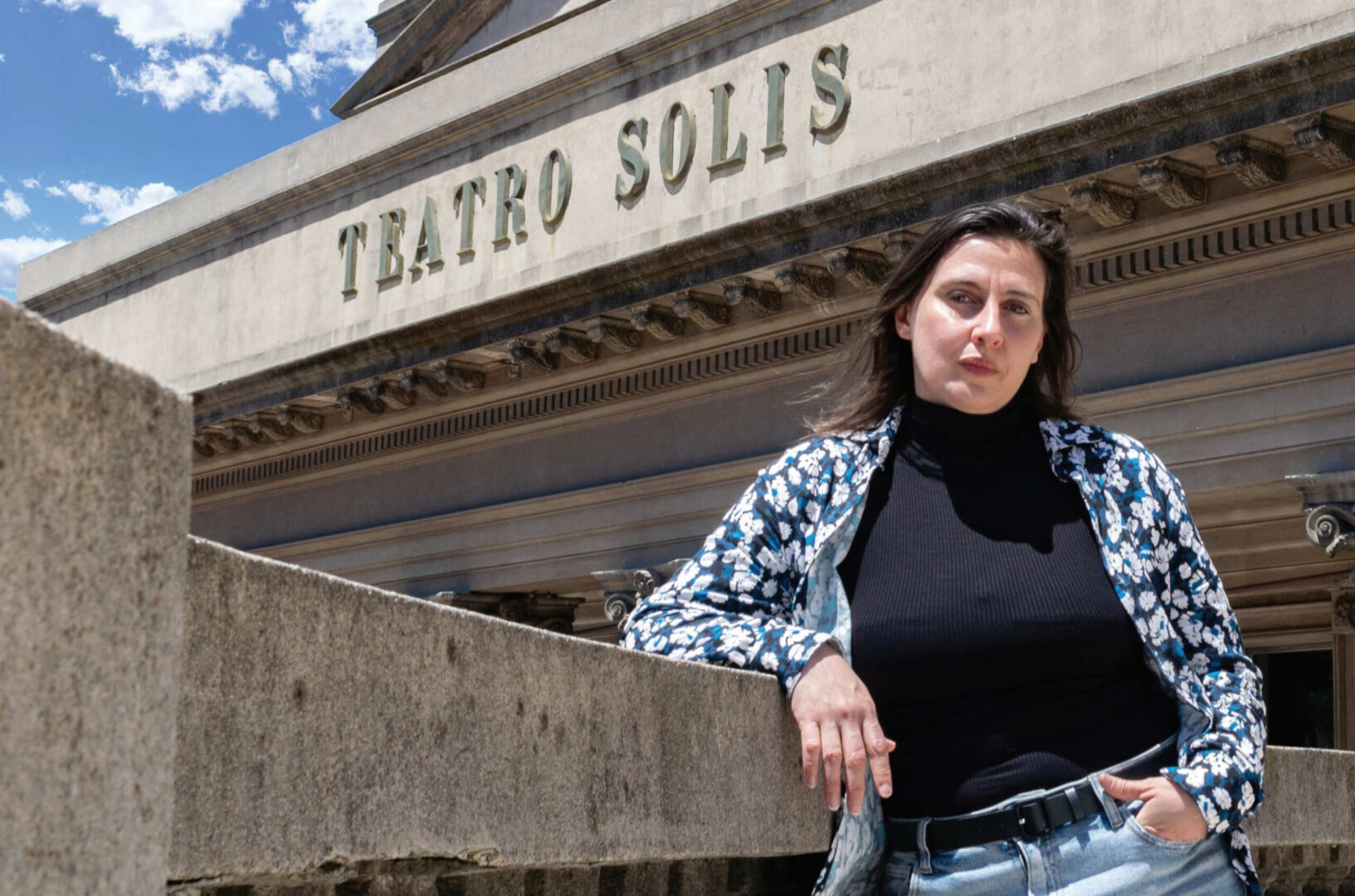Theater of the Month: Solís Theater of Montevideo, the voice of heritage

The history of the Solís Theater is told in different stages. In its 166-year history, this theater, the oldest in South America, has been plagued by social conflicts, adaptations in its architecture, and convergences between different aesthetics and artistic disciplines in its programming. Inaugurated in August 1856, the Solís is a historical heritage of Uruguay where diversities of artistic disciplines are condensed – from opera and theater to dance and concerts – and diversities of audiences for the cultural development of the country. The theater, currently directed by Malena Muyala, keeps alive the identity of the country and the original idea of its conception: to satisfy the essential need for a society.
by Alvaro Molina R.
On the night of August 25, 1856, at the opening of the Solís Theater in Montevideo, the public was expectant. The day had a special meaning. That day Uruguay celebrated its 31st anniversary of the declaration of its independence.
The cold of winter did not prevent people from crowding into the theater box office. Several of the attendees were pushing each other trying to buy a last minute ticket. The theater had a seating capacity of 1,584 people, but more than 2,500 tickets had been sold for the opening gala.
Those who had managed to get a ticket ran quickly through the corridors and stairs of the Solís, a scene that according to chroniclers of the time generated a noise like a stampede. Meanwhile, the crowd outside was anxious and tense. On orders from theater management, the box office had to close and officials feared the chaos would spark a riot.
Any threat of riots was dispelled shortly before 8 p.m., when the presidential carriage arrived at the theater. Orderly and solemn, the Solís board, led by Juan Miguel Martínez, headed towards the foyer to receive Gabriel Antonio Pereira, president of Uruguay at the time.
According to the Uruguayan researcher Susana Salgado -author of the book El Teatro Solís: 150 years of opera, concert and ballet-, the inauguration of the theater “was more than a gala night, more than a patriotic celebration.”
When the lights dimmed in the main room, Sofía Vera-Lorini appeared on stage to sing the national anthem. Immediately afterwards, the Italian conductor Luigi Preti raised his baton over the orchestra. After the anthem, the main show began: Ernani, by Giuseppe Verdi, was the opera selected to accompany the birth of Solís.
“Once the music flooded the room, a new theater was born: the Solís Theater,” Salgado adds in her book. With more than 150 years of life, the Solís continues to write part of the cultural history of Uruguay.

Illustration by Jesús Cubela for the Solís Theater in 1904. Photo: Archives of the Historical Museum Cabildo de Montevideo.
An “indispensable need” for Uruguayan society
The Solís Theater is located at number 678 on Buenos Aires Street, in the historic center of Montevideo, also known as the Ciudad Vieja neighborhood. Behind its classical façade, reminiscent of the Carlo Felice Theater in Genoa, the building houses three performance halls, a projection room and the Estela Medina Exhibition Hall, in honor of the outstanding Uruguayan actress.
This stage is home to the stable bodies of the National Comedy -created in 1942-, the Montevideo Philharmonic Orchestra -whose debut was in 1956- and the Montevideo Symphonic Band, the oldest cast in Uruguay, created in 1907.
The original Solís project dates back to the first half of the 19th century, when a shareholders’ company was formed with the aim of building and managing a theater. In 1840, the nascent Eastern State of Uruguay sought to provide its citizens with a “theater that is in harmony with the prosperity and wealth of the Republic.” The theater had to satisfy “an indispensable need for our society, to the height that its illustration and commerce have reached.”
In 1840, the Modena architect Carlo Zucchi was the one who took the first step in conceiving the infrastructure and layout of the theater. The original idea of the so-called “Zucchi project” considered generous spaces, in an order that would complement the location with the architecture of the theater. Zucchi’s ambitions, however, would find no outlet in the commission in charge of financing the theater.
“Zucchi’s project was magnificent, but completely unrealistic from a financial point of view,” says academic Susana Salgado in her book El Teatro Solís: 150 years of opera, concert and ballet.
Zucchi had to step aside due to the economic infeasibility of his project. He left the scene annoyed and charging for the services rendered to him, to which the Board of Directors responded, openly, that the Italian architect’s idea did not follow the necessary guidelines. After the frustration of Zucchi, who took the architectural direction of the project was Francisco Javier de Garmendia. Garmendia’s mission would be to adapt the theater’s plans according to the economic possibilities of the country. However, the project would encounter another obstacle, this time one that would shake the entire country.
The “Great War” and the birth of a theater
At the beginning of the 1840s, the so-called “Great War” was unleashed, a bloody civil conflict whose catastrophic consequences decimated Uruguayan society and economy. The country was divided between two governments, each claiming the legitimacy of its administration. Between 1843 and 1851, Uruguay was in a state of war, crossed by national, French, Argentine, Basque, Spanish and Italian armies, added to the Brazilian intervention to resolve the conflict.
On October 8, 1851, peace was finally signed. The country found itself in a fateful scenario, virtually in ruins, plagued by poverty, foreign debts, illiteracy and financial collapse.
The Solís Theater project also suffered the consequences of the conflict. The construction of the plans adapted by the architect Garmendia had begun in 1842, but the outbreak of the war forced to stop the works the following year. In 1854, after a redistribution of the shares and the definition of some adjustments in the infrastructure, the project’s Directive Commission had another task: what name to give the theater?

Detail of the checkerboard floor in the corridors of the Solís Theater. Photo: Diffusion Solís Theater / Santiago Bouzas.
The first choice of name was Teatro de la Empresa, a pragmatic resolution on the part of the entourage. Both some shareholders and the Uruguayan press asked to reconsider the issue, there should be a more identity alternative. Francisco Gómez, a member of the Board of Directors, proposed Teatro Solís to commemorate the navigator Juan Díaz de Solís, the first European -it is still unclear whether the explorer was of Castilian or Portuguese origin- to reach the Río de la Plata, in 1516.
The episode of the inauguration of the Solís Theater, that night of the 25th of 1856, is symbolically summarized with the verses that the poet Francisco Acuña de Figueroa wrote for the occasion, recited by Heraclio Fajardo with half of the orchestra installed:
“Ora puedes, orgullosa
Por tu digno coliseo
Competir, Montevideo
Con Venecia y con París”
The poet’s verses echoed again 50 years later, when Solís celebrated its five decades of existence with a concert under the baton of Italian conductor Arturo Toscanini.
“The great mecca” of culture in Uruguay
According to the former Uruguayan president Julio María Sanguinetti, the social and cultural life of Uruguay is inseparable from the influence that the Solís has had in its more than 150 years of existence.
Names such as the Italian tenor Enrico Caruso, the soprano Luisa Tetrazzini, the pianists Arthur Rubinstein and Claudio Arrau, the dancer Vaslav Nijinsky (who had his last performance at the Solís, in October 1917), the director Alexander Smallens, the actresses Sarah Bernhardt and Vivien Leigh, among many others and other world-renowned artists.

The zarzuela “La del manojo de Rosas”, by Pablo Sorozábal, closed the 2022 lyrical season of the Solís Theater. Photo: Diffusion Solís Theater / Santiago Bouzas.
The pride of this theater, historical heritage of Uruguay, is the Main Hall, crowned by a 500-kilogram Bacaratt crystal chandelier, an illustrated ceiling in its center and a fresco with mythological figures made in oil on the proscenium.
Since 2020, the Solís Theater has been directed by Malena Muyala, who approached her theater in her hometown of San José. “I knew since I was a child that there was a theater that was greater than that which was ‘my theater’ -Teatro Macció in San José-, which was the one in Montevideo. There is no one you talk to in the interior of the country who does not say that the Solís is the great mecca, the great reference”, Muyala said in a recent interview with Dossier Magazine.
In 1937, the Solís Theater was acquired by the Departmental Government of Montevideo. Under this new administration, the first public cultural policies of the Uruguayan capital were given. The Solís was redefined with the aim of maintaining it as “the heart of the city” with a program open to all genres and artistic disciplines.
“I am closing the strategic plan that will seek to link with the community,” Muyala said in a 2021 interview for Radio Sarandí in Uruguay. “We want the theater to go to the neighborhoods, but not to take for granted what people want and also to have a theater with open doors, that invites you to enter and get involved,” he said on that occasion.
The theater program currently receives shows from different artistic areas and disciplines such as dance, opera – being the zarzuela La del manojo de rosa, by Pablo Sorozábal, one of the latest productions – and theater, but it also opens its stages for presentations of popular Uruguayan musicians. Through this cultural, open and inclusive offer, the Solís Theater seeks to remain a benchmark for the artistic life of Uruguay.








